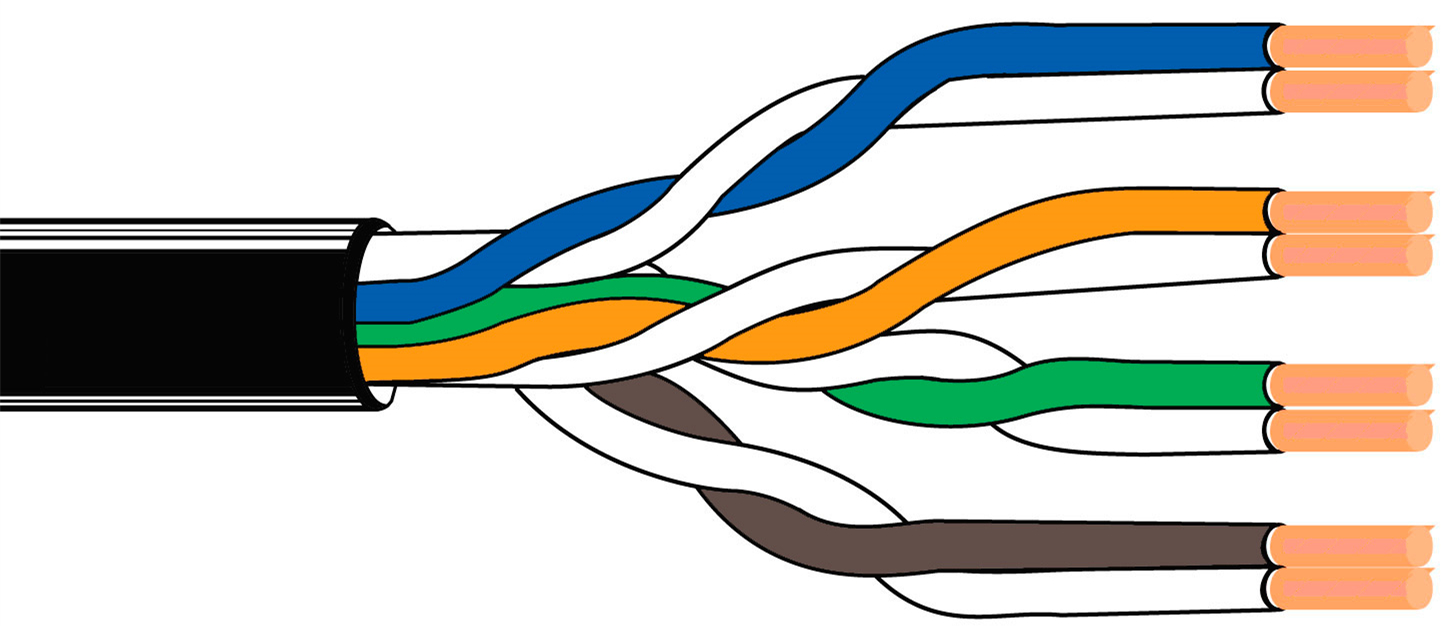As one of the oldest types of cable ever invented, twisted pair cabling was first developed by Alexander Graham Bell in 1881. Since then, it has been widely deployed for telephone line network in America. Nowadays, the application of twisted pair has been extended worldwide mainly for outdoor land lines offering telephone voice service.
Generally speaking, twisted pair cabling is a kind of copper wiring that two conductors of a single circuit are twisted together. The purpose of using twisted pair is to offset electromagnetic interference (EMI) from external sources to stop degrading the performance of circuit. Also, different standards of twisted pair are specified into various categories as cat 1, cat 2, cat 3, cat 4, cat 5/5e, cat 6/6a, cat 7/7a, cat 8/8.1/8.2. And this article will give a brief introduction to some of the above categories.
Different Categories of Twisted Pair
1) Cat 5/5e
Cat 5 twisted pair cable is often used for structured cabling of computer networks. It is available to 10/100 Mbps speeds at up to 100 MHz bandwidth. However, it is now considered to be obsolete and replaced by cat 5e (enhanced). Cat 5e is one the most commonly used twisted pair cables at present. The biggest distinction between cat 5 and cat 5e is that cat 5e has a lower cross talk and its transmitting speed can reach up to 1000 Mbps.
2) Cat 6/6a
As a substitute of cat 5/5e, cat 6 twisted pair is applied to Gigabit Ethernet and other network physical layers. It supports up to 10 Gbps speed at 250 MHz. When used for 10GBASE-T applications, cat 6 has a reduced maximum length from 37 to 55 meters. But cat 6a (augmented) has been evolved to perform at up to 500 MHz, thus the maximum cable distance is longer than cat 6 of up to 100 meters.
3) Cat 7/7a
Cat 7 is the standard for twisted pair cabling used for 1000BASE-T and 10GBASE-T networks. It provides performance of up to 600 MHz with a maximum length of 100 meters. As for the cat 7a (augmented) cable, it has a higher frequency of 1000 MHz. Results show that it may be possible to support 40 GbE or even 100 GbE at a very short length.
4) Cat 8/8.1/8.2
Cat 8 is the USA standard specified by ANSI/TIA while cat 8.1 and cat 8.2 are specified by ISO/IEC for global application. All these three kinds of cat 8 twisted pairs are used for 25GBASE-T and 40GBSE-T at the maximum frequency of up to 2 GHz. Except cat 8 adopts cat 8 links, cat 8.1 uses class I links and cat 8.2 uses class II links. The key difference between class I and class II is that class II allows three different styles of connectors to be not compatible with one another, or with the RJ45 connector.
Conclusion
Twisted pair cables have been classified into different grades called categories. These standards especially formulate the data capacity of the cable. Higher categories are more expensive than lower ones, but most of cost is actually spent on labor force for installing the cables. And twisted pair cables under cat 5 are not recommended now. Higher categories are the future trends for network cabling.

没有评论:
发表评论